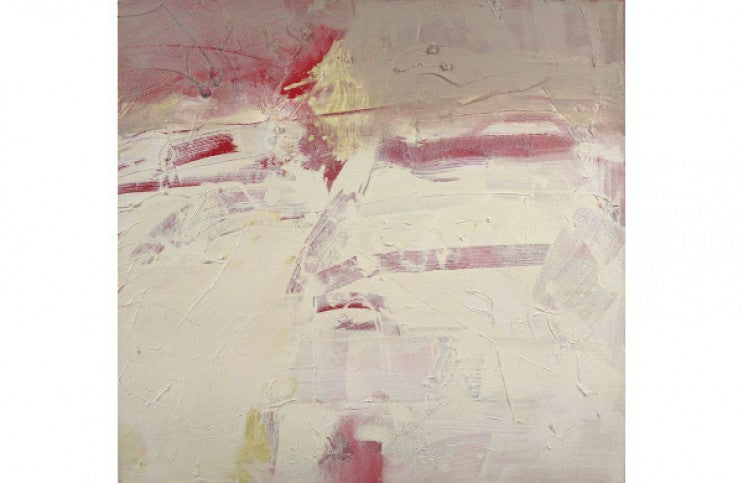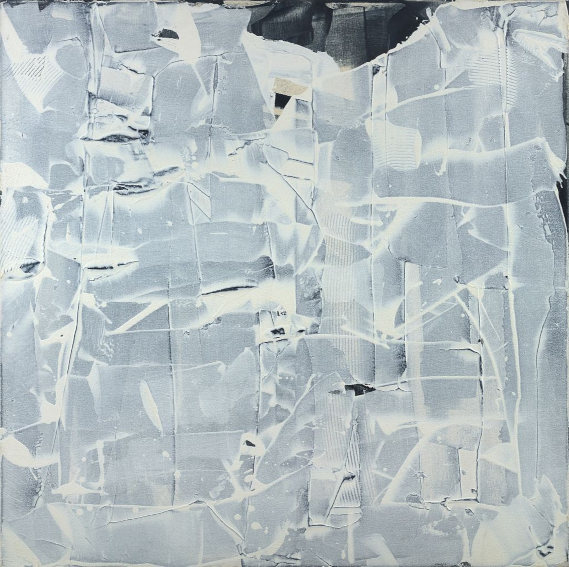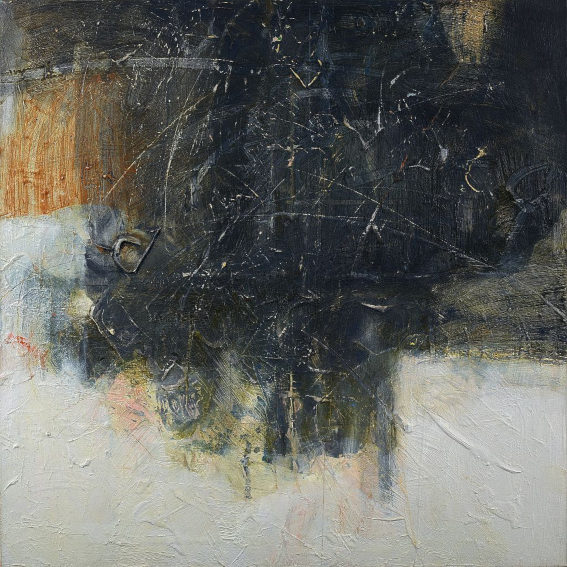
Abstraction as Continuous Adventure - The Art of Frank Wimberley
More than a century ago, Wassily Kandinsky asked whether purely abstract art could ever achieve the same emotional effect as music. Since the 1950s, Frank Wimberley has been proving that it can, by simply doing it—composing images that pull the human mind and heart along on a journey of feeling, same as a symphony might. One year ago, Berry Campbell gallery in New York announced it had signed Wimberley to the roster of artists the gallery represents. Their highly anticipated first solo exhibition of his work just opened on 30 May. Featuring more than 30 paintings spanning from the early days of his career to works created just this year, the museum quality exhibition breathes fresh life into the landscape of contemporary American abstraction. In fact, the emotional content of these paintings is so condensed it is frankly difficult to experience the whole exhibition in one visit. Wimberley starts each painting with what he calls an “attack”—an instinctive incursion into the blankness. That first, intuitive confrontation with the unknown territory of the surface leaves behind a known quantity: a mark. Like a mystical boat carrying the rider across a spiritual river into the netherworld, that first mark guides Wimberley along through the composition, collaborating with him on a series of choices that lead the picture to its unimaginable, yet inescapable aesthetic conclusions. Imagine a jazz trio: the drummer strikes the snare drum; the keyboard player riffs on that sound; the horn player follows suit; a tempo emerges; finally, the improvisation takes on a life of its own and pulls the players along till it plays itself out. This is how Wimberley paints. Like a listener at a jazz concert, a viewer at this Wimberley exhibition may be best served by an attitude of openness verging on surrender. Pick a starting point and let your eye establish its own tempo. The composition will carry you along.
Visual Magnetism
The first thought you might have when you encounter the work of Wimberley is that you are witnessing the fulfillment of the wisdom of Hans Hofmann. Except in a Wimberley painting, the lessons of “push pull” that Hofmann taught give way to a sort of magnetism—an attractional vibration that holds the composition together through movement. Hofmann was a critical forebearer to the emergence of Abstract Expressionism, and Wimberley unabashedly claims his heritage as part of the Abstract Expressionist family tree. Unlike so many artists who either rejected the theories and practices of the movement, or became lost in its formal aesthetic concerns, Wimberley rightly perceives the limitless potential of the Abstract Expressionist method. He is proof that its foundation of subconscious call and response and improvisation, leading towards the revelation of what Wimberley calls a “controlled accident,” knows no boundaries.

Frank Wimberley - So Near, 2010. Acrylic on canvas. 50 x 50 in (127 x 127 cm). © Frank Wimberley. Berry Campbell Gallery
Most refreshing is the earnest and personal way in which Wimberley pushes the Abstract Expressionist tradition forward. He paints not with ego, but with humility. He once stated, “The life of my work involves its texture and its motion...you follow its path upwards and elsewhere until it returns to the beginning...until you have seen all which the painting has to offer...until you are convinced it is whole.” The thirty-plus paintings on view at Berry Campbell do not need to do much convincing. The impression they declare of their wholeness is immediate. Each painting is decidedly, unequivocally unique, yet each shares the same sense of structure, balance, and confidence. The compositional strength of one is matched by the unmistakable gravity of the next. The allure goes on and on. The challenge is not to decide whether or not these paintings are valid or complete, but to be able to open up enough to experience their completeness.

Frank Wimberley - This One, 1999. Acrylic on canvas. 40 x 40 in (101.6 x 101.6 cm). © Frank Wimberley. Berry Campbell Gallery
Unpredictable Light
What is perhaps most fulfilling about Wimberley is the unpredictability with which he endows his work, a factor heartfully expressed throughout the exhibition at Berry Campbell, but especially evident in a cubby of five paintings in the heart of the gallery. At one end of the cubby, a large (50” x 50”) square canvas titled “So Near” (2010) makes a dynamic first impression, like a sheet of shattered glass. As you move in front of it, the light changes, transforming the surface qualities of the acrylic paint to those of a sheet of ice. That ice then changes to silk, like a veil protecting a mysterious inner world. Finally, the paint itself declares the formal character of the painting, guiding the eye from place to place. Rarely do emotion and formality co-exist so elegantly as in the aesthetic world of this painting. Yet beside it, three more square paintings demand your attention: “Sand Bar” (1995), a red-streaked, impasto picture of tension with inescapably pareidolic inclinations; “Somehow, Soft Rain” (1995), a moody impression of primordial energy; and “This One” (1999), a sensitive abstract expression of the soft seduction of nature. At the opposite end of the cubby hangs “The Inevitable Shift” (2013): a silvery, metaphysical twin to “So Near,” its enamel-like surface seemingly illuminates from within.

Frank Wimberley - Somehow, Soft Rain, 1995. Acrylic on canvas. 46 x 46 in. © Frank Wimberley. Berry Campbell Gallery
No matter how many of these paintings I see, I am surprised by the next one I see. It is not only the compositional strategies that are so unpredictable, it is the light. The textures and surface qualities Wimberley coaxes from his paints make some appear like mirrors, and others like caverns into which the light seems to disappear. Some of his surfaces feel stand-offish, almost wounded. Others are as welcoming as a hug. Where these esoteric qualities come from, I do not know. I can not even say whether they are universal—that word is so subjective. It seems likely that Wimberley does not even know. He is open about his methods, and the most crucial point he makes is that not even he truly realizes where each painting is taking him. He goes along for the journey, same as us, letting the composition show him the way. Frank Wimberley is on view at Berry Campbell gallery in New York through 3 July 2019.
Featured image: Frank Wimberley - Sand Bar, 1995. Acrylic on canvas. 40 x 42 in (101.6 x 106.7 cm). © Frank Wimberley. Berry Campbell Gallery
All images used for illustrative purposes only
By Phillip Barcio






